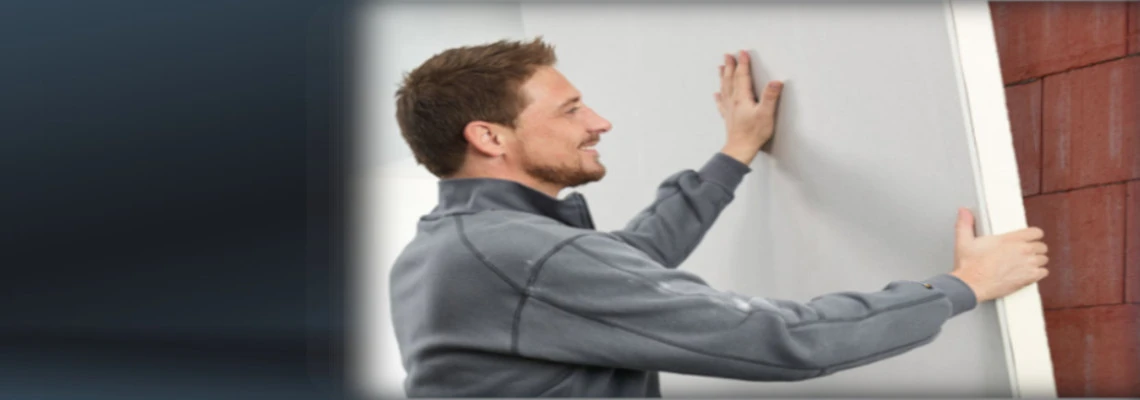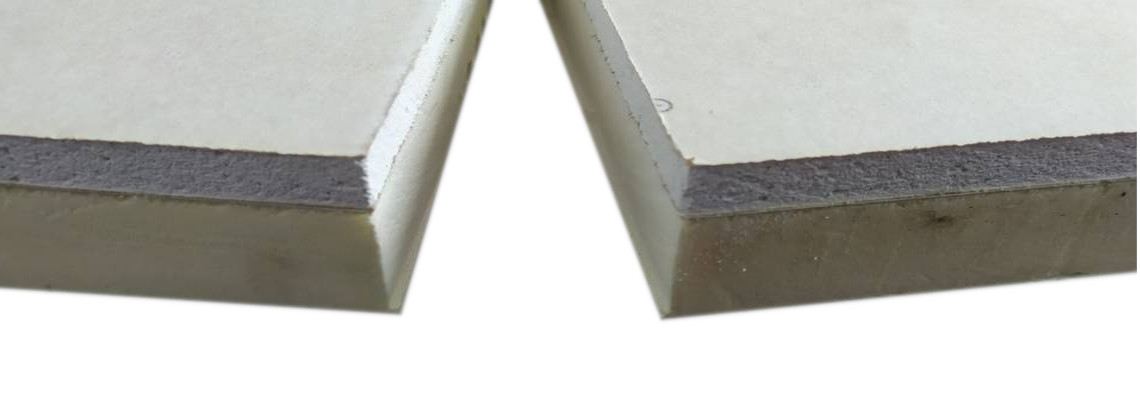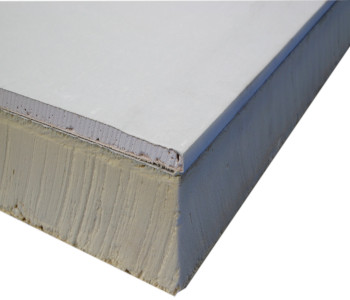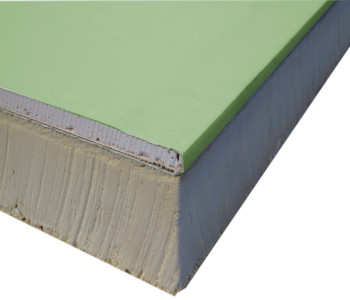
Rigid insulation board bonded to plasterboard.
How does it sound?*
Innovation has included the introduction of PIR insulation boards laminated with plasterboard, which speeds the construction process on-site.
"Generally speaking, building sites are not good places to build things,”
“It is much better to do things in a factory environment when you can.”
says Mr Pemberton (Celotex chief executive)
Rigid insulation panels bonded to plasterboard have a PIR foam core, which is covered on both sides with an aluminum foil. This solution is ideally suited for attics or internal walls. We get here an insulation layer along with a finishing layer. Once fixed, boards are ready for finishing. They can be either plastered with multifinish or taped jonited. You can paint straight onto/over plasterboard in most cases. You simply cover the joints and any holes created by your fixings first. Being able to paint directly onto the surface of the new wall is convenient and saves time and money. You can also plaster over painted plasterboard at a later stage.
This is an excellent example of how PIR plasterboards significantly facilitate the work. They solve the problem when the building requires insulation, and it is impossible to use a classic insulation layer outside.
Moreover, bonding the "two in one" product does not require specialist knowledge, so everyone should be able to handle the installation. It is worth noting that PIR core is resistant to chemical and biological factors and it will remain effective for the life span of the building.
 Thicker boards help meet the higher levels of insulation now required, but demand for thinner products is also expected to grow as they are useful for “retrofitting” in existing buildings where space is at a premium.
Thicker boards help meet the higher levels of insulation now required, but demand for thinner products is also expected to grow as they are useful for “retrofitting” in existing buildings where space is at a premium.
According to builing regulations insulation should normally be at least 60mm thick, and can be up to 100mm.
Using Celotex PL4000 or Xtratherm XT/TL the time physically installing the product to achieve the same plasterboard finish is reduced.
The ability to install Insulated Plasterboard quickly as its a two in one solution is a huge advantage. It is cheaper and quicker to install than the traditional dry-lining or insulation method. Installing it brings a whole host of benefits to your home.
Whether building new or upgrading your house-you reducing energy costs and improving living conditions. On top of that, PIR plasterboard provides a continuous layer of thermal insulation across studs in timber frame walls removing the ‘thermal shorts’ that occur at the framing which can reduce the insulation value of a conventional wall by up to 20%. Designed to achieve excellent thermal value where minimal cavity is required giving buildings continued thermal efficiency.
PIR boards are bonded to 2 types of plasterboard:
- PIR+Standard tapered edge 12.5mm or 9.5mm Wallboard ( Wall ǀ Ceiling applications )
- PIR+Moisture Resistant tapered edge 12.5mm or 9.5mm Wallboard ( Kitchen ǀ Bathroom ǀ Walls ǀ Ceilings)


PIR bord bonded to standard plasterboard PIR board bonded to moisture resistant plasterboard
Both products are suitable for internal applications, fixed with adhesive direct bonding technique (adhesive dabs).
These insulated plasterboards incorporate an integral vapour control layer, which helps to reduce the risk of condensation.
The thermal laminates boards are suitable for direct bonding ('dot and dab') and mechanically fixed installation techniques.
Both are most cost-effective insulation methods in comparison to other insulation products.
PIR plasterboard is incredibly popular due to the reduction in labour and construction times.
It is highly recommended for being easy to install and handle, as well as for being environmentally friendly.
Simply number one insulation and drylining solution is cheaper and quicker than buying both constituent parts.
*All the information provided in the content published on Insulationgo blog is for informational and educational purposes only. Insulationgo LTD makes every effort to ensure the accuracy and timeliness of the content, but we do not assume any responsibility for any errors or omissions.
The information presented on this blog should not be considered as professional advice or a substitute for consulting relevant experts. Before making any purchase decisions or taking action based on the information presented here, it is strongly recommended to contact the product manufacturer directly to verify the details and ensure its suitability for your specific needs.
By using this blog, you acknowledge and agree that Insulationgo LTD shall not be held liable for any damages, losses, or inconveniences arising from the use or reliance on the information provided herein. This limitation of liability applies to all users of the blog, including but not limited to visitors, readers, and subscribers.










































































































